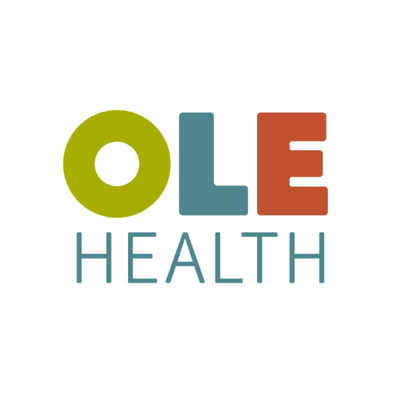
6 Signs Your Legacy Contact Center Software is Holding You Back
Technology is constantly changing, and to be fair, a lot of new and shiny features aren’t worth the hype.
In the contact center world, advancements over the last ten years have taken customer service to the next level. Long gone are the days where your customers can only reach you by phone.
Now, through inbound/outbound omnichannel, customers can text, video call, email, interact on social media, and more to receive speedy service. And agents have the same capabilities. They’re also able to help customers faster with things like self-service options, automations, and precision-routing.
Legacy contact center platforms were great in the past for the sole purpose they served. But now, as customer’s demands are increasing and agent’s satisfaction can make or break a call center, legacy platforms just aren’t cutting it.
71% of customers end their relationship with a company because of a poor customer service experience. Don’t let your contact center platform hold you back from providing better agent and customer experience. Learn how your legacy platform might be stifling your business’s growth.
First, how do you know you’re on a legacy contact center platform?
Legacy software refers to older platforms that are considered obsolete when compared to modern technology. Legacy platforms may technically still be able to “get the job done”, but they offer no ability to scale alongside your business and customer’s needs.
Let’s look at a scenario of where this applies, so we can paint a clearer picture of how legacy software holds businesses back from progress.
Ten years ago, a contact center decided to purchase a call center platform to help field and manage customer calls. The platform gets the job done for that sole purpose.
Flash forward, the business is growing… along with customer’s demands for better customer service options. But the contact center platform can’t scale to keep up. As a single platform that’s voice only at its core, it can’t support omnichannel, AI, advanced automations, robust integrations, or workforce optimization.
Let’s walk through six signs your contact center might be restrained from growth due to a legacy platform.
1. Your customers are limited on where they can reach you.
Texting, email, social media, calling, video chat… we have so many means of communication. Your customers want to be able to reach you and hear from you on their preferred channel. And, nowadays, customers simply won’t pick up the phone if they don’t recognize the number. 97% of consumers reject or ignore phone calls from numbers they don’t know.
Being truly omnichannel means your contact center can flex between communication channels, at any time, all from a single queue. It also means all your channels work together to share information, too.
2. And, they’re limited on when they can reach you.
There’s a huge chance that your customers are using your services or products on weekends, late at night, or on holidays. Therefore, your customer’s need to be able to reach your customer service 24/7.
It’s difficult and costly to staff a 24/7 agent team, though. But your customers still want answers on their watch. Conversational AI bots make interactions feel more human and more authentic and point your customers in the right direction without ever needing to tap an agent. And, your customers will appreciate the ability to reach you when they need it most.
3. Your agents are wasting time on redundant tasks.
When customers have questions or encounter problems, they’re looking for resolution as quickly and efficiently as possible. Waiting on hold for an agent to help with something simple, like a password reset or common question, can be very frustrating. Automating menial and repetitive tasks has huge impacts on both your agent’s workload and your customer’s satisfaction.
Intelligent Virtual Agents (IVAs) empower your customers with self-service options while letting your agents focus on tasks that truly need agent support. SharpenCX’s low-code/no code development lets you easily build your IVAs to handle omnichannel inbound and outbound. When a customer’s interaction requires more assistance, the IVA will seamlessly transfer the interaction to a live, human agent.
4. All the tools your agents use are separate, and don’t integrate together.
Modern tools have made interactions more efficient and effective, but bolting on new tools without seamlessly integrating them can make your workflows fragmented. Moving to a platform with out-of-the-box integrations and open REST APIs give you the freedom and flexibility you need to build custom solutions.
Cohesion is your goal. Your agents should be able to jump between tools, without feeling like they’re switching applications.
5. You’ve got more software in your tech stack than you can manage.
Since legacy platforms aren’t able to scale, as your business grows, you probably had to pick up different software applications along the way. But over time, these applications add up – and before you know it, you have a jumbled mess of software solutions that overlap, become underutilized, and waste more money than they are worth.
How do you solve this problem? Simplify your tech stack. This means you need to review your current list of applications, audit them to see what overlaps and is underutilized, and reduce systems to streamline your tools.
Simplifying your tech stack to a manageable, all-in-one solution, like SharpenCX, can help your organization:
-
- Reduce risk
-
- Increase ROI
-
- Become more agile
-
- Lower overhead
-
- Improve productivity
-
- Simplify your processes
As your business grows, it’s natural that your contact center’s requirements become more sophisticated. SharpenCX’s all-in-one platform has everything you need, minus the headaches of bolted together applications.
6. You’ve got little to no workforce optimization.
Let’s start off with a quick definition. What is workforce optimization?
Workforce optimization (WFO) is a group of strategies that work towards driving employee and operational efficiency and lower overhead costs through using data. WFO helps your agents to increase their productivity with data to monitor their own performance.
With WFO, your agents are able to track, measure, and visualize how they’re doing through real-time data. They’re able to use this data to understand how they’re performing against predetermined goals, set by the agent and their manager. When agents are able to see their performance in data against their set goals, they’re more likely to crush those goals.
WFO empowers agents to take ownership of their own professional development and fosters a positive, productive coaching environment.

Customer Feature: OLE Health
OLE Health, a 7-clinic non profit health system based in Napa and Solano counties began searching for a contact center platform in 2020 that would provide:
-
- Omnichannel
-
- Better data & reporting
-
- Cleaner, more intuitive interface
Their previous legacy system, ShoreTel (Mitel) wasn’t cutting it anymore. Agents did not have visibility into their own performance so they couldn’t see how they stacked up against department goals. Their reports did not show them the exact metrics they needed to see – leading to inefficiency in how OLE used their data.
-
- OLE turned on SharpenCX’s performance tiles and are now able to work with agents on goal-setting and tracking performance over time.
-
- SharpenCX’s data science team creates the exact reports they need, when they need them–and empowers the OLE team to build their own. OLE now has custom metric reports for their executive leadership, providing them with the high-level view they need, and day-to-day reports for their contact center managers.
Changing your tech stack sounds daunting. We get it.
A lot has changed since companies first jumped on their legacy platforms. Cloud software has done a great job to make migrations as painless as possible. Take SharpenCX’s customer, Instructure, for example.
Instructure sought out SharpenCX over frustration around lack of integrations, lack of omnichannel, and inability to improve CSAT with their legacy system, Fuze.
In a 10-day period, Instructure Canvas, the world’s leading learning and education management platform, servicing more than 30 million people, dealt with a number of challenges, including a pandemic and a 5.7 earthquake.
But getting their 300+ customer care agents up and running, in a work-at-home capacity, was not one of them. It took less than a day. As a matter of fact, using SharpenCX, Instructure has been able to easily manage the sharp increase in volume it has experienced to deal with a surge in demand, as K-12, colleges and universities around the country seek an online platform to teach their classes.
You don’t have to let the fear of a long implementation hold you back from moving to modern technology. Robust contact center platforms enable you to deploy software easily with minimal onboarding time.
Making the switch to a more modern system.
Don’t let the advantages of a modern contact center platform pass you by. If your platform is holding you back by not providing omnichannel, AI & automations, robust integrations, an all-in-one architecture, and workforce optimization, consider starting the hunt for a better platform. One day you’ll look back and wonder why you didn’t make the jump sooner.
Gain more advanced features and capabilities that’ll boost customer and agent experience like you’ve never seen before. Learn more about the SharpenCX platform.

